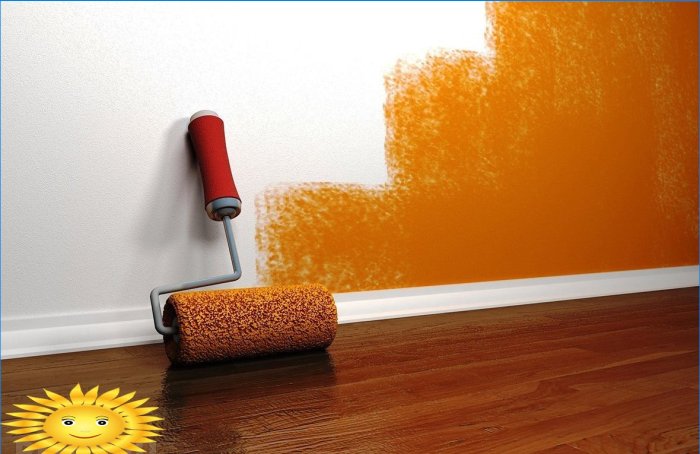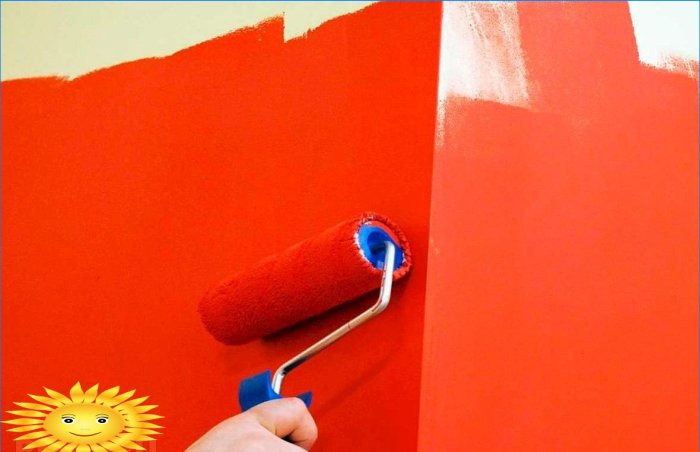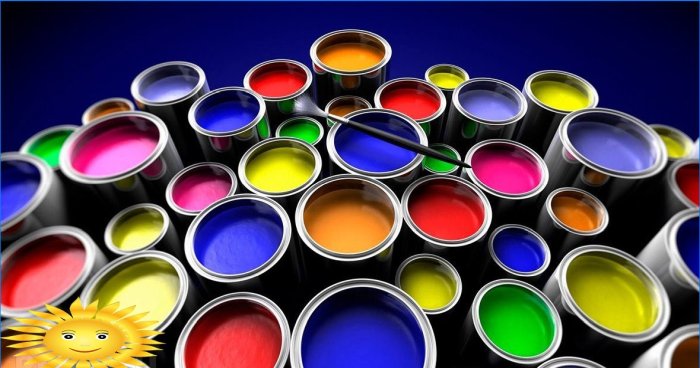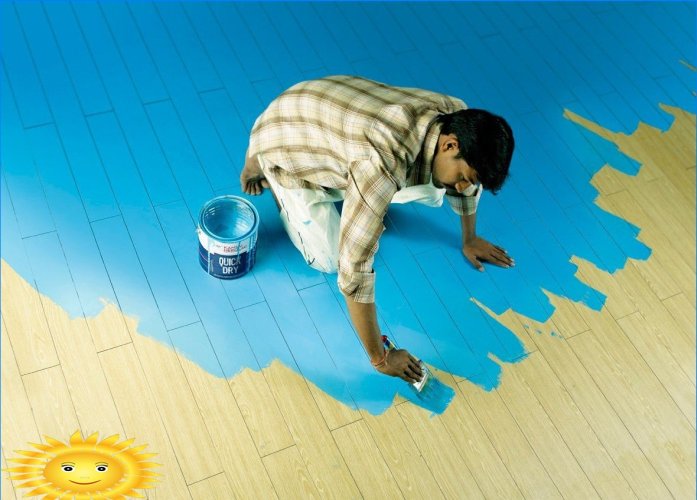Often it is the rich assortment of materials that makes the choice difficult. When you enter a construction hypermarket, your eyes run up from the number of all kinds of paint cans. Which one to choose for interior decoration work? Our advice site decided to sort out this topical issue.

First, let’s highlight the main criteria that need to be taken into account when choosing a paint:
- Toxicity. It is clear that the safer the paint, the better. It’s not easy for you to work with her, applying on the walls and ceiling, you live with her! Therefore, for work inside a house or apartment, minimally toxic compounds should be chosen;
- Surface. Choose a paint clearly for concrete, wood, metal. You need to paint over a rusty post – there is a special paint for rust. To paint the lining on the balcony, you will need a completely different composition;
- Durability. You don’t want to make repairs, even cosmetic ones, every year. Therefore, ask what guarantees the manufacturer gives, for how long the paint is designed for;
- Fire safety. It’s great if the paint does not burn at all, this should be indicated on the can;
- Large selection of colors. The richer the gamma, the better. You will be able to paint and choose the perfect shade for your interior.

All interior paints are divided into two types:
- Water-soluble, i.e. water-based;
- With organic solvents.
All water-borne paints are an emulsion of polymer powder, water and special impurities. After applying the composition, the water will evaporate, all components will be interconnected.
Water-based paints are a mixture of polymers, fillers, additives and pigments that are in an aqueous dispersion. These paints are vapor-permeable, durable, moisture resistant, often include antifungal components.
Water-based paints also come in latex and acrylic, respectively, latex-based and with polyacrylates.

A subtype of water-dispersion paints are water-based paints. In them, the emulsion consists of undissolved particles. The advantages of such formulations include:
- Non-toxicity;
- No smell during application;
- The ability to dry in literally an hour;
- The ability to use a spray bottle;
- Just stretch a layer of paint over the surface, easy to work;
- The color lasts up to 20 years;
- Fire safety;
- A wide selection of colors that you can add to the composition at your discretion;
- Easy to clean off tools and clothing.
However, water-based paints have disadvantages:
- A thin layer will not hide the inaccuracies of the wall, the surface should be perfectly flat;
- Not used for metal;
- The temperature during work with paint must be at least + 5 ° С.
Important! When buying paint, find out the date of manufacture – it is on the package. And ask the seller where the paint was stored in the winter. In an unheated warehouse? Do not take! If the composition has frozen, the paint has become unusable.

Water-based paints are also divided into subspecies:
- Vinyl. They include complex substances, the surface is more durable. Often used in the bathroom, toilet, kitchen, that is, in wet rooms;
- Latex. Washable, durable, good choice for kitchen and hallway;
- Acrylic. Washable, great for painting wallpaper, polyurethane cornices and moldings, concrete and plastered walls.

Now let’s look at organic solvent based interior paints. During its drying, essential oils, aliphatic and aromatic carbohydrates evaporate, after which the composition solidifies. The composition of organic-based paints includes Stoddard’s solvent (white spirit), gasoline, turpentine. It is for this reason that they are less popular, because during application there is an unpleasant odor.
Alkyd enamels are a good choice for wood surfaces, including floors, and metal. Their advantages include:
- Antiseptic properties – fungus and mold will be killed;
- Good adhesion;
- The ability to hide minor surface defects, uneven walls;
- Increased wear resistance and durability;
- Bright, saturated colors.
However, alkyd paints have disadvantages:
- Are burning;
- Toxic;
- Dries up to 24 hours;
- You have to use a respirator during work and ventilate the room for a long time.

The portal has already devoted a detailed article to oil paints. We also talked about how to work with oil paints.
The advantages of such formulations include:
- Long shelf life. You can simply fill the rest of the paint in the jar with any vegetable oil and seal it;
- Persistence;
- More environmentally friendly than alkyd. They usually contain only natural oils;
- Protects wood from fungus and insects.
But oil paints have many disadvantages that make them less and less popular:
- Dry up to 72 hours;
- An unpleasant smell can be kept indoors for 10 days;
- May lose hardness in the sun, when heated;
- The color lasts only three years;
- High fire hazard.

Mineral paints also stand out, which are well suited for surfaces with a porous structure, such as plaster, concrete walls and bricks.
There are three types of mineral paints:
- Calcareous. Inexpensive, in the composition of lime flour, crumb and special, persistent pigments;
- Cement. They form an impenetrable, moisture-resistant film on the surface; they are absolutely not suitable for wood, metal and glass;
- Silicate. High strength refractory paints, do not burn. Produced with the addition of liquid glass, ideal for painting brick and concrete walls.

When buying paint, keep in mind that, on average, one square meter of surface takes from 200 to 300 grams. As for the most popular manufacturers of interior paints in our country, we highlight the Finnish brand Tikkurila, Caparol, Dulux, Ceresit, Rogneda, Alpina, Senezh, Belinka.

I’m a bit confused about how to choose the right paint for interior use. There are so many options available, from finishes to colors. What factors should be considered when selecting paint for interior walls? Should I prioritize durability, ease of application, or something else? And what about the different finishes like matte, satin, or gloss? Any advice or tips on how to make the best choice for my interior paint would be greatly appreciated.